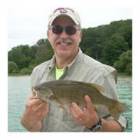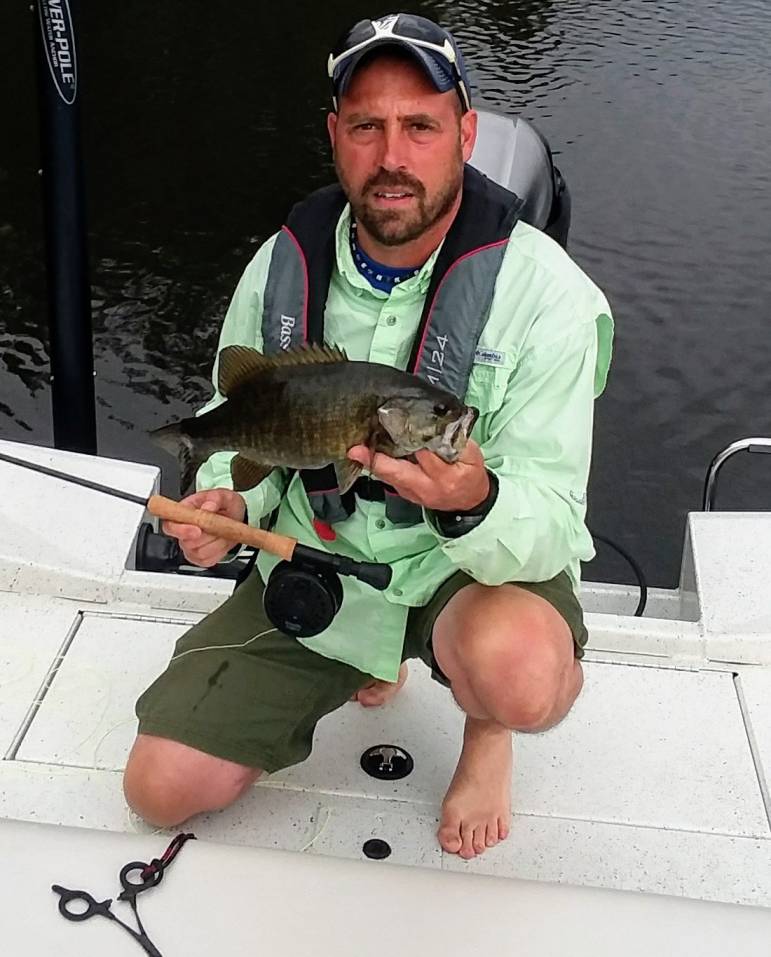 Greetings anglers!
Greetings anglers!
The cooler weather of late may have ended the “dog days” of summer but there are sure to be a few warm days ahead. Not a ton to report this week but still some good fishing days on the way as we head into the fall season. The rivers are still running at or above normal and the trout bite should improve with cooling temperatures. If you’re a fly angler, time to switch to hoppers, ants, and beetles; otherwise known as “terrestrials.” Bass will start putting on the feedbag preparing for winter, and will likely be more aggressive. Soon the hills and valleys will be as colorful as a male spawning brook trout, my favorite time of year. This is my last report of the season, but feel free to drop me a note anytime at scott.decker@wildlife.nh.gov.
Thanks to those of you who have contributed to these reports.


Thanks to those of you who have contributed to these reports.
In the North Country fisheries biologist Andy Schafermeyer says that August is the time that terrestrial insects become a big part of a fish’s diet. Foam-bodied grasshoppers, Chernobyl Ants, and any fly with rubber legs will usually convince a fish to bite. Both warm and coldwater fish can be taken by this approach. Last week, he and his son fished two different locations using terrestrials. Andy was casting on the Connecticut River in North Stratford while his son was on Nay Pond in Milan. Later that night his son told him about the smallmouth he caught on short casts in the weeds while Andy told him about the brown trout he caught in slow-moving, bend-in-the-river pools. They both used a five-weight fly rod, dry terrestrial flies, and caught a bunch of fish. The next day, they pair switched locations as Andy chased the bass and his son targeted trout.
Steve over at North Country Angler in North Conway reports the cooler days and the even cooler nights have brought the fish out of the summer doldrums, and folks are catching fish everywhere in the Mount Washington Valley. The Saco River is having blue-winged olive mayfly hatches, and the Ellis River is having Cahill hatches which bring trout to the surface. The Androscoggin River has been a nympher’s paradise with nice catches of rainbows. Steve notes that anglers can look forward to a great fall fishing season.

In the Central Region the Region 2 fisheries biologists have been conducting annual forage fish surveys on our lake trout and salmon lakes over the past several weeks. These surveys are conducted at night and primarily target populations of rainbow smelt. The biologists begin their surveys around 9:00 pm as the schools of smelt move off the lake bottom toward the surface, following the zooplankton they feed on. Sophisticated sonar equipment is used to document the density of smelt along several transects of the lake. This is followed by towing a trawl net to collect a sample of the smelt for measurement in the lab. The data collected is used to adjust landlocked salmon stocking rates to keep the population in balance.
There have been reports of good salmon fishing lately at Lake Winnipesaukee with a number of 4 and 5 pound fish being taken, and lures in orange or red have been hot lately. Best times have been early in the day or on overcast days. I also got a report of anglers catching a number of rainbow trout in the 13-14 inch range. These are likely the yearling trout that were stocked earlier in the spring and have not recruited to the legal length of 15 inches.

In the Upper Valley Region Scott Biron tells me anglers targeting bass from the Ashley Ferry boat ramp in Claremont were reporting excellent fishing just off the ramp. There is more water flowing in the Sugar River, and fly anglers have had some great outings catching trout. Tewksbury Pond in Grafton has reported some increased activity with anglers trolling. One fly angler had all but given up and was heading to take his canoe out when he caught a nice brook trout in about four feet of water on a Wood Special. Clark Pond in Canaan is producing in addition to Blaisdell Lake and Russell Pond in Sutton. Both Sunapee and Pleasant lakes have had great days too. Scott says the overarching theme seems to be that if your “go to” methods aren’t working, then it’s time to change it up.
In Southwestern New Hampshire, fisheries biologists have been sampling bass ponds in an effort to evaluate special regulations designed to increase the number of large bass. The study waters include Clement Pond (Hopkinton), Grassy Pond (Rindge), Gregg Lake (Antrim), and Warren Lake (Alstead). Sampling with an electrofishing boat at night was supplemented with angling during the day using volunteers to offset any electrofishing sampling bias. Most of the angled bass were taken in 10-12 feet of water on Texas-rigged baits or lipless crankbaits. Warmwater Program Leader Jason Carrier informed me that bass in these lakes are all in very good condition, and a number of 4-5 pound fish were observed. An analysis of the data this coming winter will determine if the current “special” regulations are improving the size of the bass compared to when these lakes were managed under “general” regulations.
On the Seacoast, the rains have lowered the salinity in the Piscataqua River, pushing a lot of the bigger striped bass out. There are reports of squid catches, and some kayak anglers catching stripers in the mid-thirty inch range just outside the mouth of Portsmouth Harbor, so bigger fish are still around. Pogies (menhaden) are still hanging around outside of Rye Harbor, and the presence of squid, along with warm waters, may draw some black sea bass into the Piscataqua River.
Anglers are also reminded to report your striped bass fishing trips online at www.surveymonkey.com/s/stripedbass. Volunteer anglers contribute valuable information that fisheries biologists use in assessing the striped bass population annually. We want to know about all of your trips, even when you don’t catch anything! All reporting anglers will be entered into a drawing at the end of the season.
- Trout stocking reports: posted in season at www.fishnh.com/fishing/trout-stocking.html.
- Fishing licenses: www.nhfishandgame.com. Kids under 16 fish free!
- Find us on Facebook: www.facebook.com/nhfishandgame
- Sign up to receive news: nhfishgame.com
- Read the latest fascinating articles about fishing in New Hampshire from some of the best writers in the field – subscribe to NH Wildlife Journal







